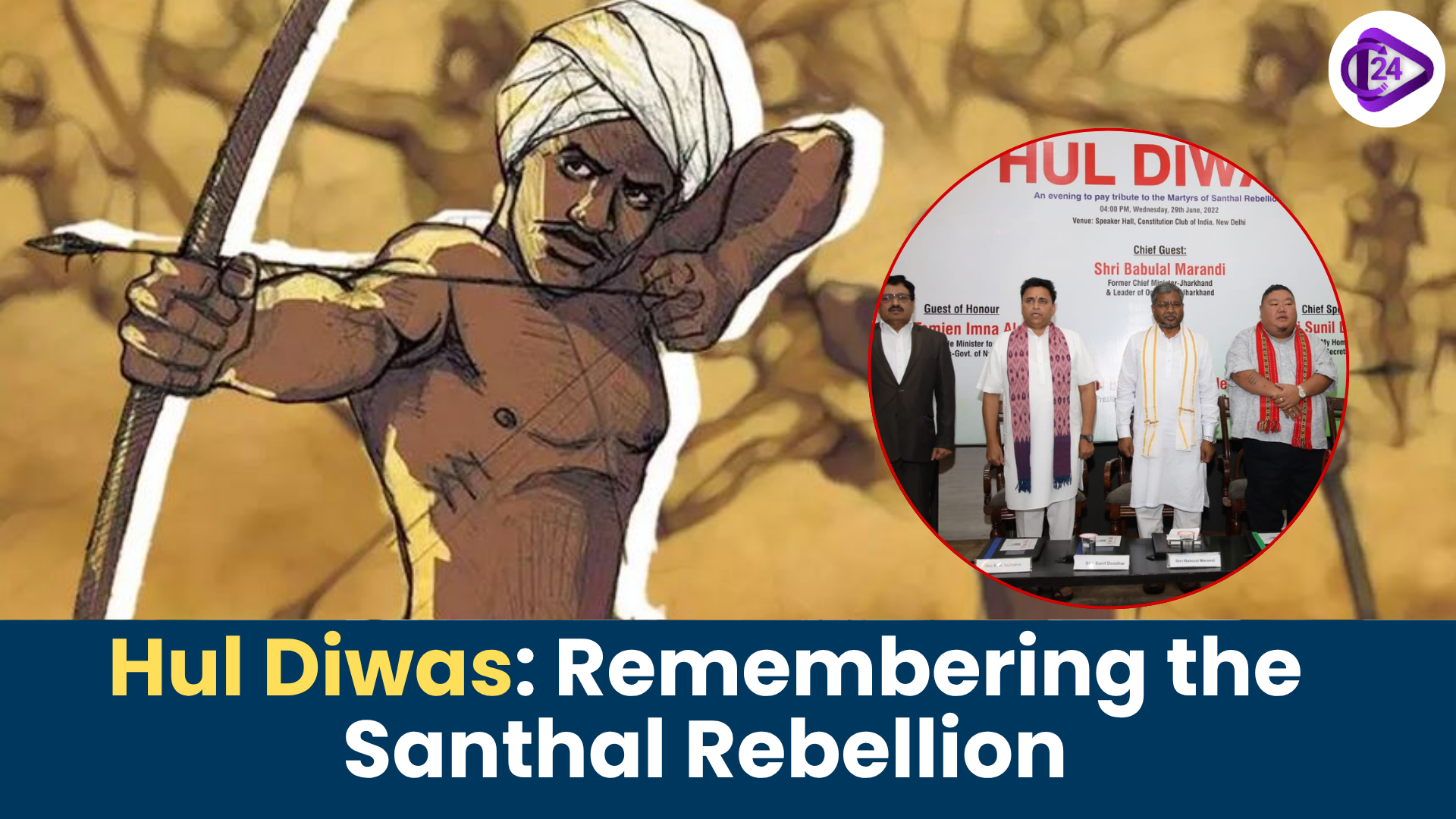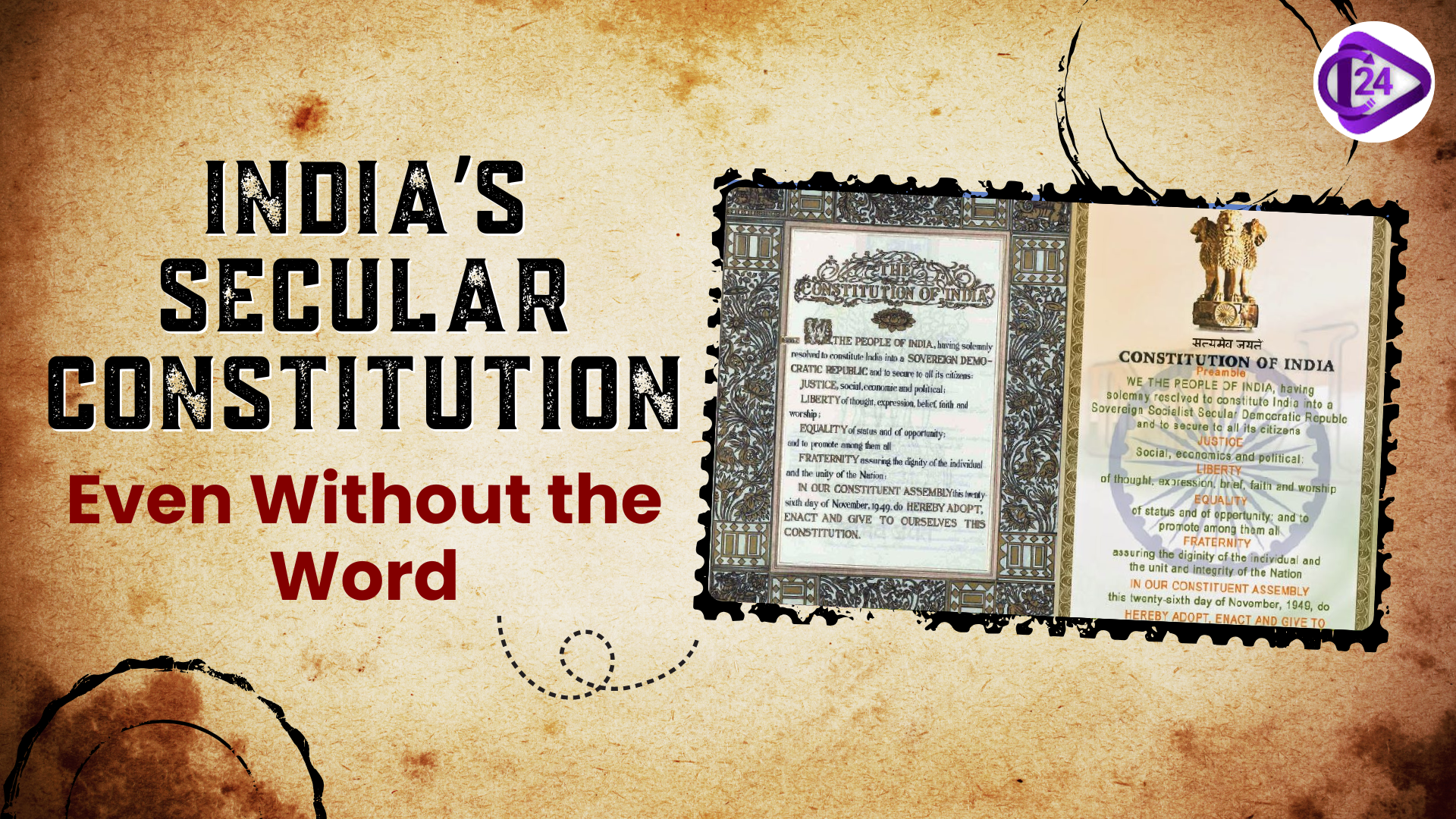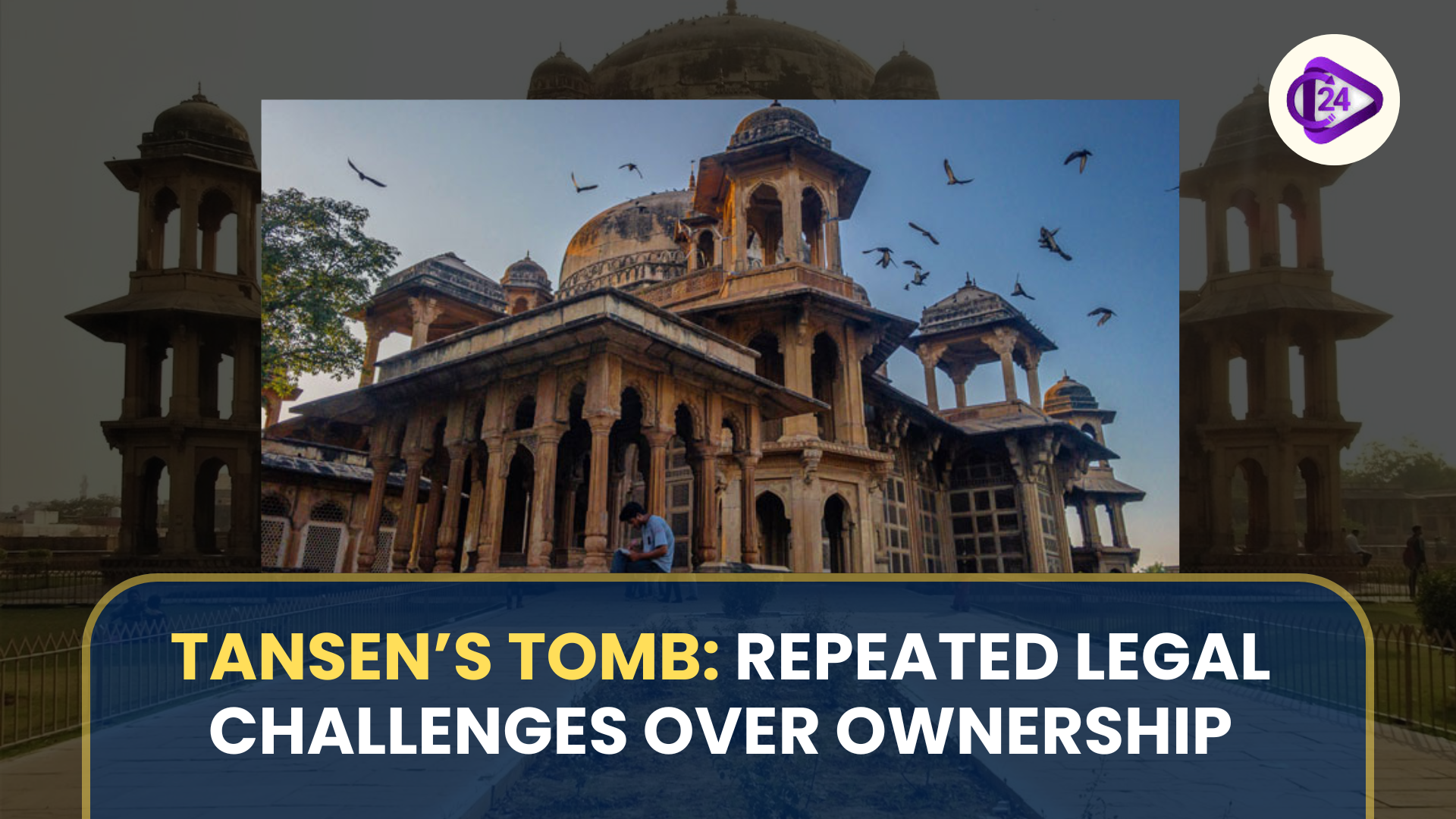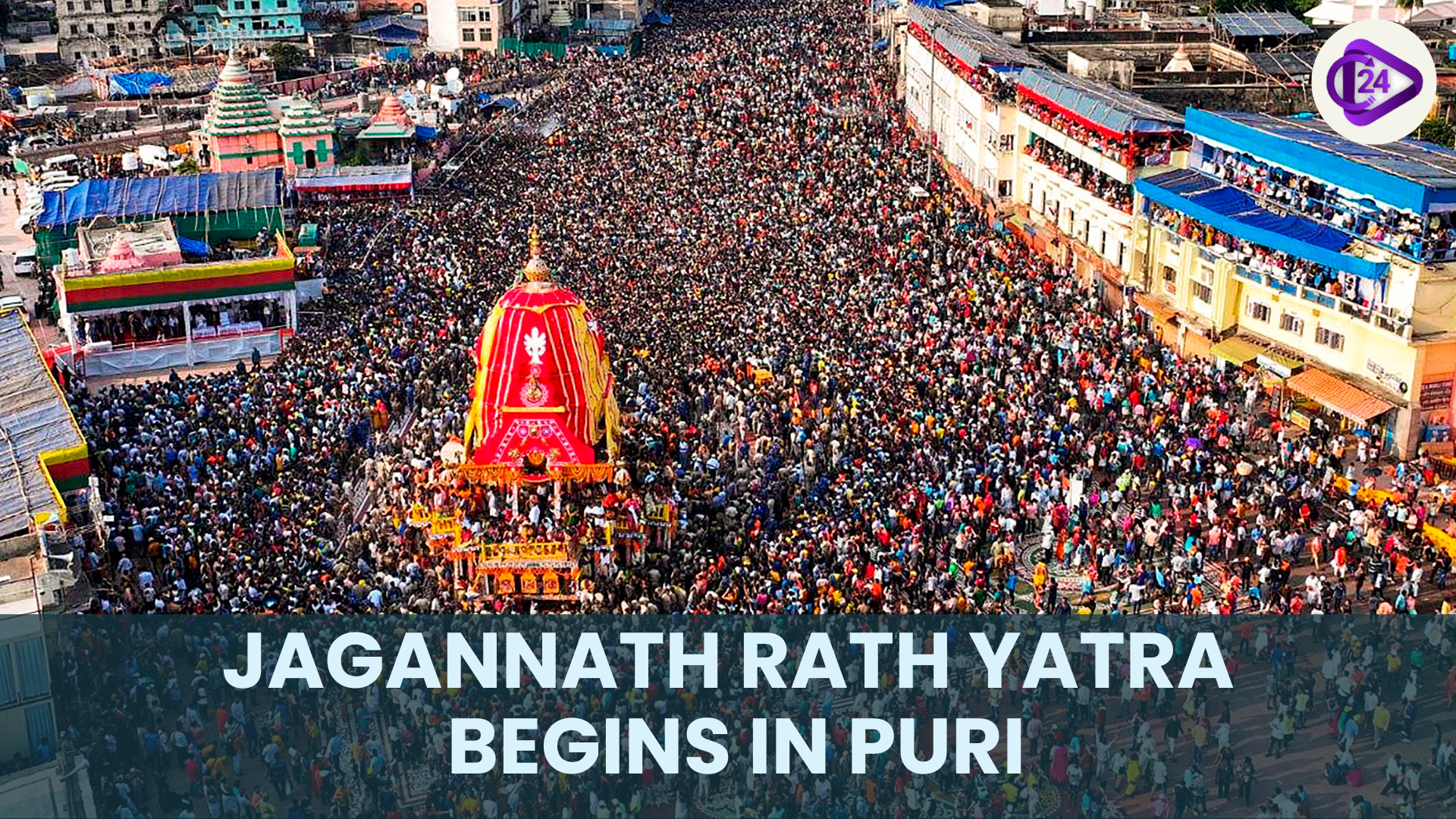
created by leaders of tribal community Sidha and Kanhu Murmu. The day represents the resistance by the tribe and their struggle towards justice. Although the rebellion was crushed, this became a basis to future fights on tribal rights and freedom. The after-effect of this movement is seen to reign amongst the tribal tribes in India, particularly in states of Jharkhand, West Bengal, Odisha, Assam, and Bihar.
Context:
-
In the annual Hul Diwas tribal village protest against the removal of the stage that was used to recall the 1855 Santhal rebellion, the police clashed against tribal villagers.
-
It is a politically controversial case where there is a singling out of police brutality against the tribal community.
Key Points
What is Hul Diwas?
-
The Hul Diwas is celebrated on 30 th June every year in remembrance of the Santhal Rebellion in 1855.
-
It is also the rebellion of Santhal people, mainly Sidho Murmu and Kanhu Murmu, against British colonialism and those policies of exploitation which existed in their local societies.
Meaning of “Hul”
-
The word, Hul in Santhali means revolution, uprising or resistance in Santhali language.
-
It is a battle against wrong, against the British government as well as local landlords, and moneylenders.
When or Where the Santhal Hul Occurred?
-
This revolt started on 30 th June of the year 1855 in Bhognadih which is now the Sahibganj district of Jharkhand.
-
It spread to some regions of Jharkhand, Bihar and West Bengal and continued till January 3 in 1856.
Important Personalities of Rebellion:
-
Main leaders, Sidho Murmu and Kanhu Murmu.
-
They have brothers (named) Chand Murmu and Bhairav Murmu.
-
Their sisters Phulo Murmu and Jhano Murmu who were instrumental in militant resistance as well.
The Women in the Period of Hul Diwas:
-
Women led some of the revolts and their leaders were Phulo Murmu and Jhano Murmu who joined men in the fight.
-
Their courage is now getting more popular and it has been an example to tribal women and girls.
Causes of Santhal Rebellion:
-
The Santhals were evicted on their native lands: Alienation of land.
-
Economic exploitation A large part of earnings got taken out by taxes and usurious loans by local moneylenders and zamindars.
-
Compulsory work and deprivation of self-control over tribal organization and law.
-
Indifference of the British on the tribal wrongs.
What was the nature of the Rebellion?
-
An estimated 60000 Santhals fought the rebellion armed with bows, arrows, axes, and spears.
-
The uprising established its government and proclaimed itself independent.
-
Successful at the start, it was later squashed by the British leading to the loss of thousands of lives amongst the tribals.
Legacy of the Hul Rebellion
-
The Hul Rebellion acted as a foreshadow to the 1857 Sepoy Mutiny.
-
It was a representation of tribal claim, courage and sacrifice.
-
The revolt also resulted in the creation of Santhal Pargana district in 1855 which was a significant administrative reform.
What is the Hul Diwas Celebration these Days?
-
Homage is also done at Sidho-Kanhu Memorial Park in Bhognadih and the statues of the leaders are also garlanded.
-
Santhali cultural programs with music and dances.
-
Demonstrations and marches of tribal groups.
-
Government organized a fair in Ranchi and Bhognadih.
Acknowledgement of Hul Diwas:
-
Considered a Government recognized State holiday by the Government of Jharkhand.
-
Growing national awareness because of programs geared towards the welfare of tribals.
India as a Modern Case:
-
Hul Diwas is a reminder of how the tribals resisted and gave their contribution to India becoming freely independent.
-
It talks about tribal rights, defense of land, language, and culture.
-
It highlights current issues affecting tribal communities such as displacement, marginality and exclusion of access to basic services such as education and healthcare.
Monuments on Hul Leaders:
-
Sidho-Kanhu Memorial Park at Bhognadih.
-
Monuments and statues in Ranchi, Dumka and Jharkhand.
-
The university is named Sidho-Kanhu University in Dumka, after them.
Conclusion
Hul Diwas is the day of cultural pride and opposition of tribal people, especially Jharkhand and it is a reminder of their fight towards justice and equality. Today, the Santhal Rebellion remains a source of inspiration to movements in India in the cause of tribal rights and social justice.



 India’s Secular Constitution, Even Without the Word
India’s Secular Constitution, Even Without the Word India Adds 683 New Fauna Species and 433 Flora Taxa in 2024
India Adds 683 New Fauna Species and 433 Flora Taxa in 2024 52 Villages Along LAC and LoC in Ladakh to Get Reservation Benefits
52 Villages Along LAC and LoC in Ladakh to Get Reservation Benefits India Puts a ban to Jute Imports by Bangladesh through Land and Sea Ports
India Puts a ban to Jute Imports by Bangladesh through Land and Sea Ports Bid to Snatch Control of Tansen’s Tomb: Repeated Legal Challenges Over 16th Century Monument
Bid to Snatch Control of Tansen’s Tomb: Repeated Legal Challenges Over 16th Century Monument The Big AI Shake-Up: Bengaluru's Response to Workforce Disruption
The Big AI Shake-Up: Bengaluru's Response to Workforce Disruption Centre Plans Initiative to Boost Execution of Tribal Schemes
Centre Plans Initiative to Boost Execution of Tribal Schemes Shubhanshu Shukla: First Indian to Enter International Space Station
Shubhanshu Shukla: First Indian to Enter International Space Station World Famous Rath Yatra of Lord Jagannath will kick start today at Puri in Odisha
World Famous Rath Yatra of Lord Jagannath will kick start today at Puri in Odisha






